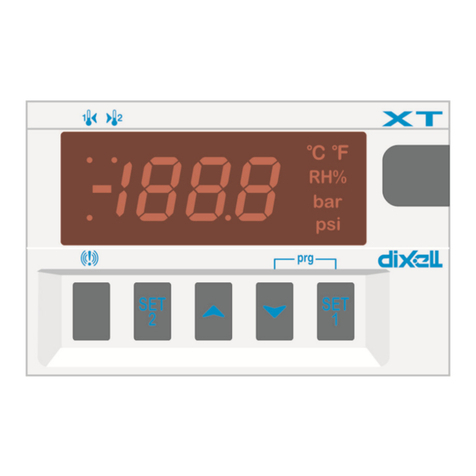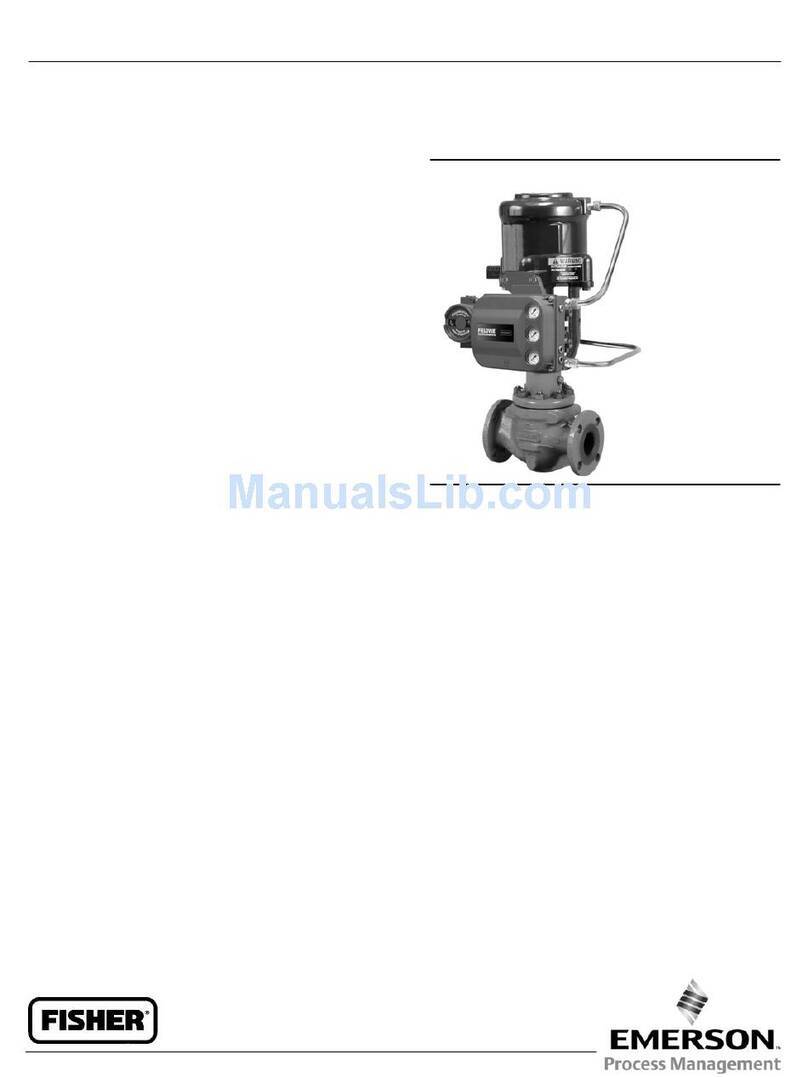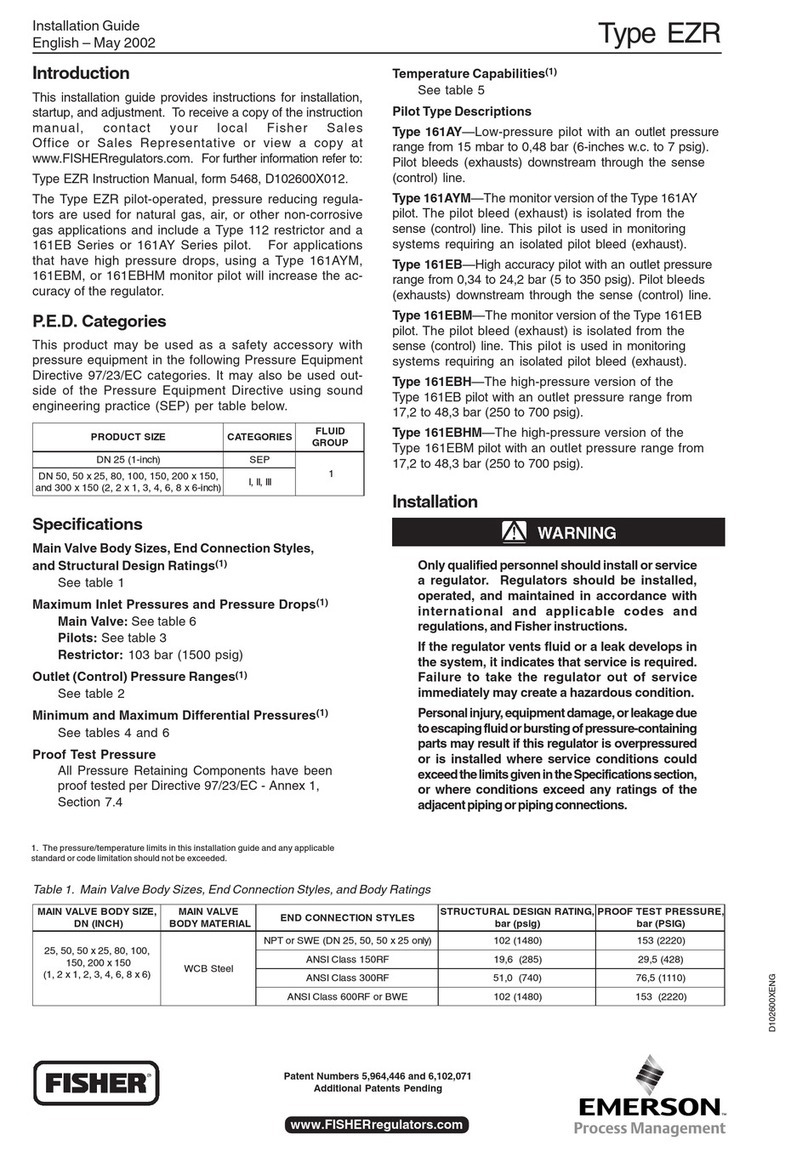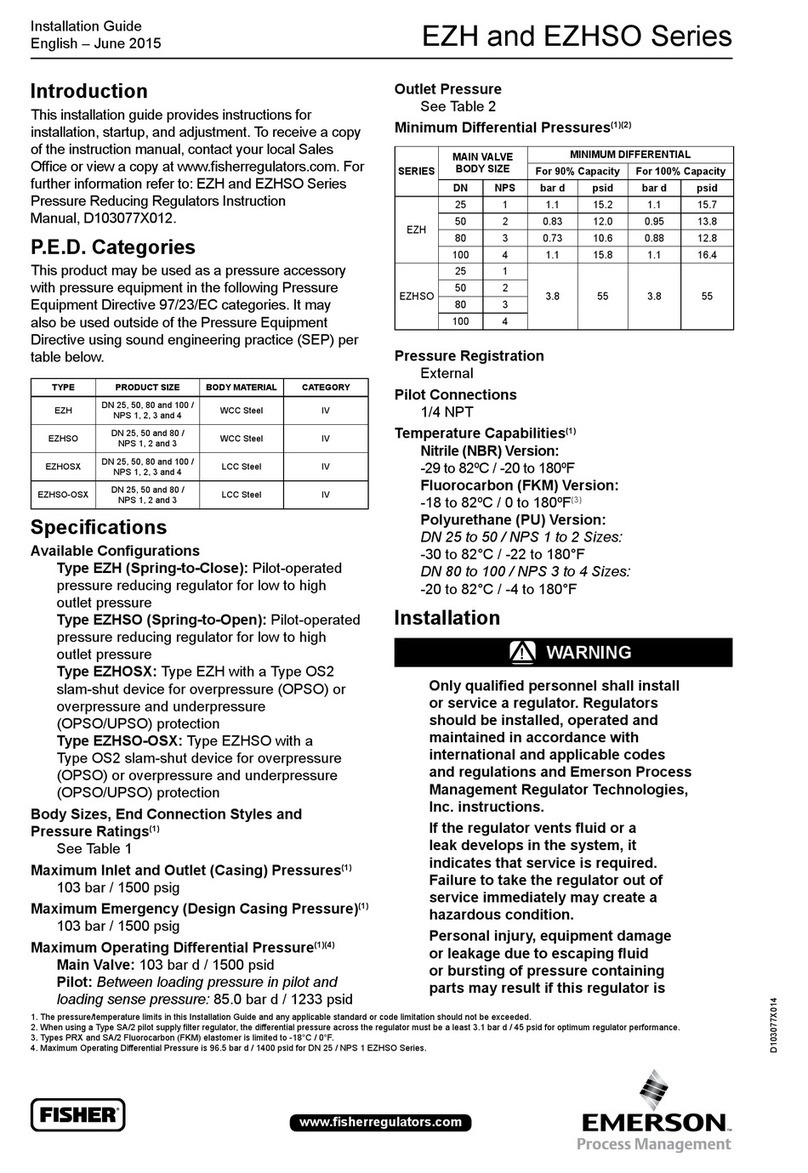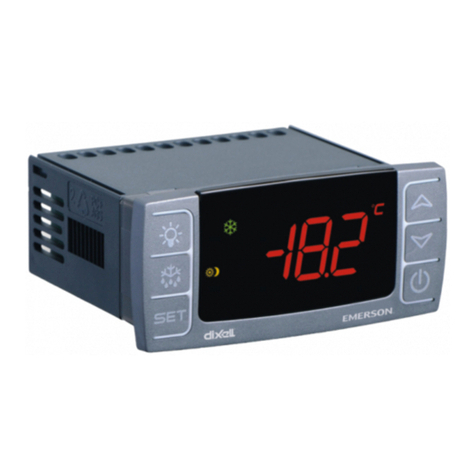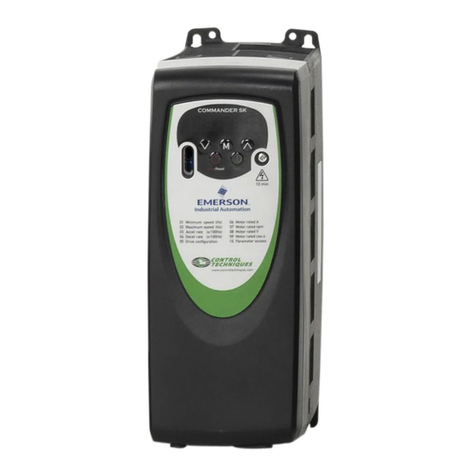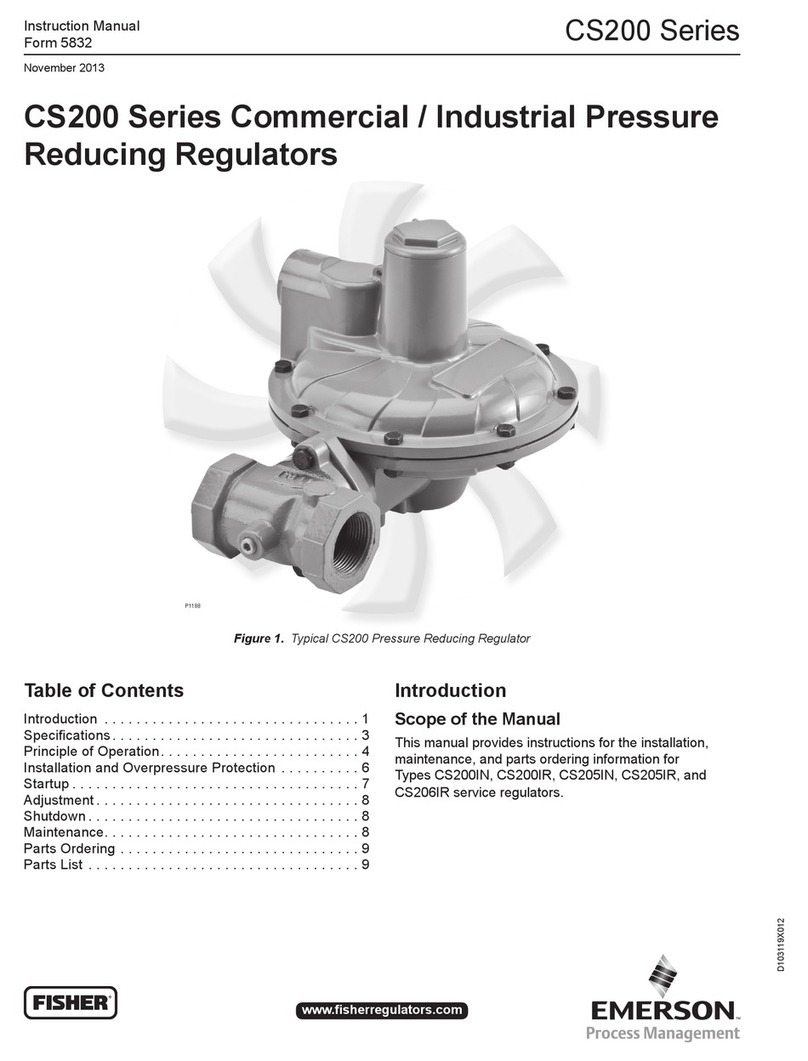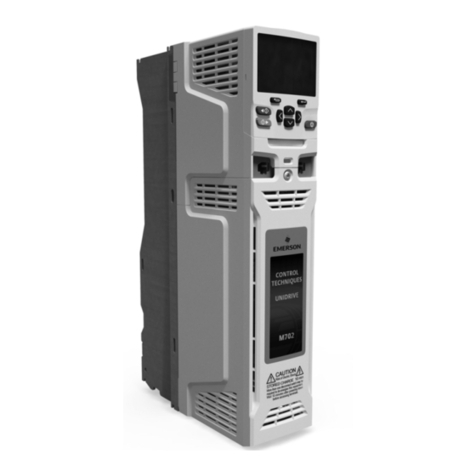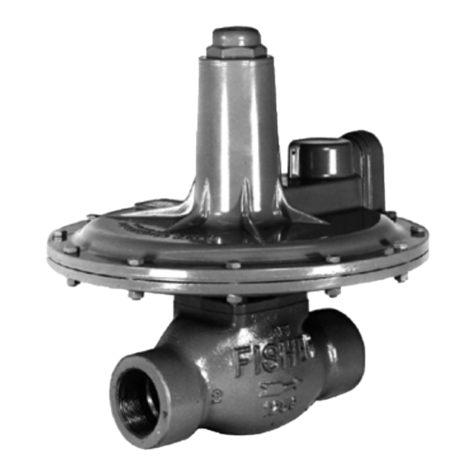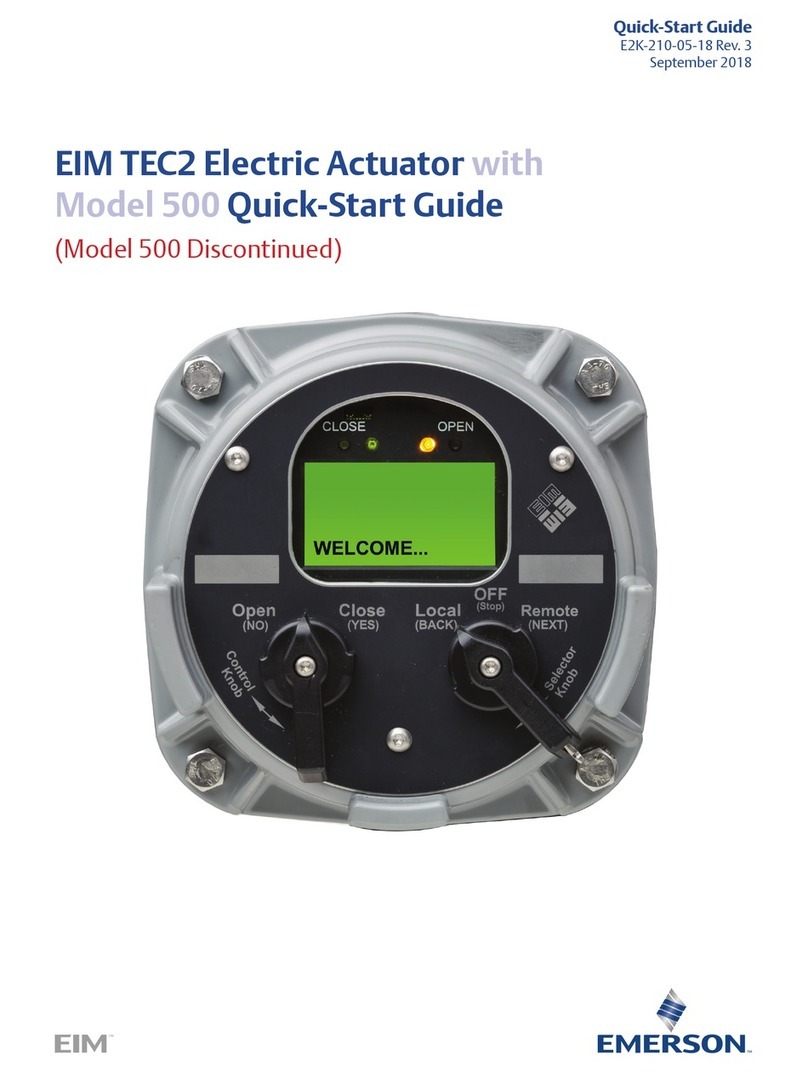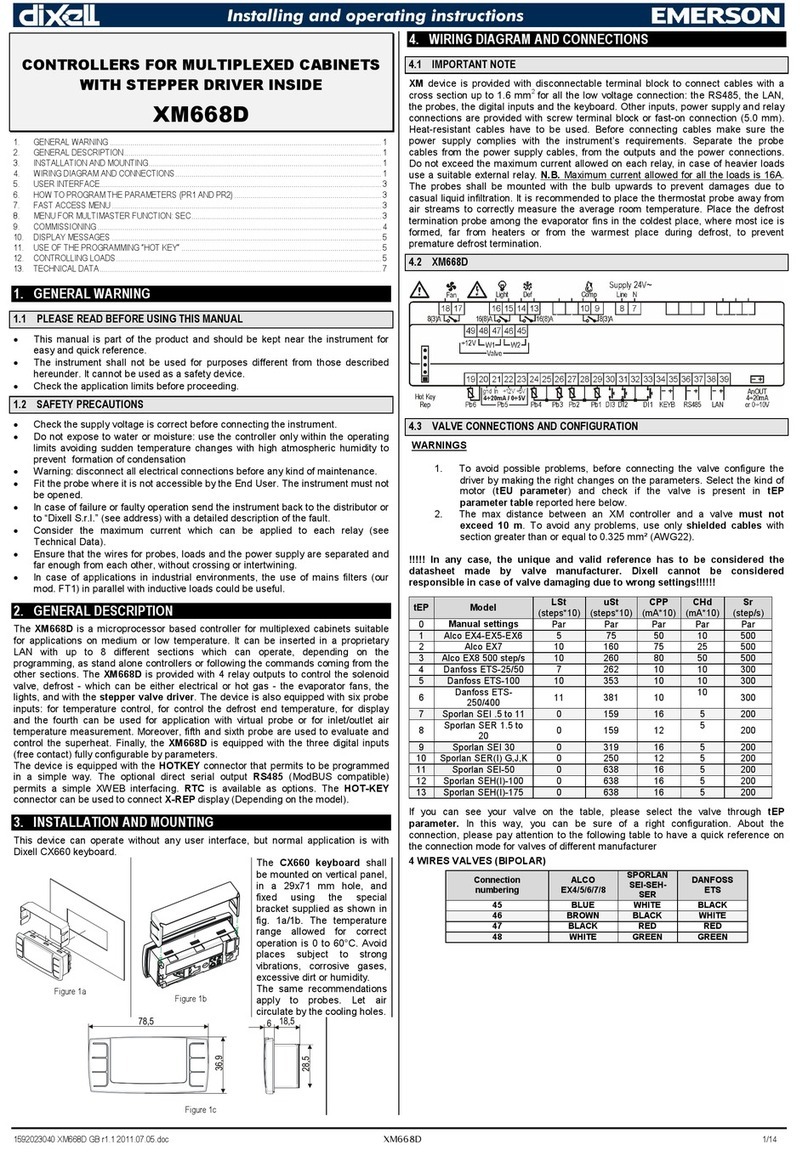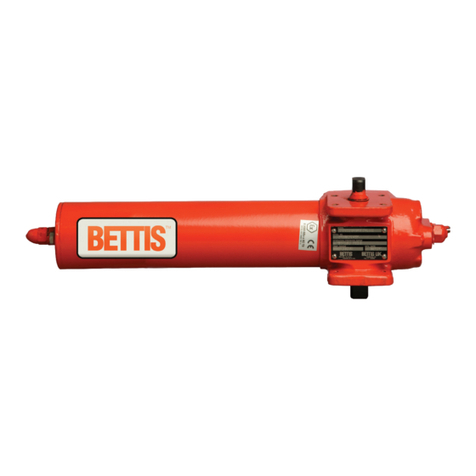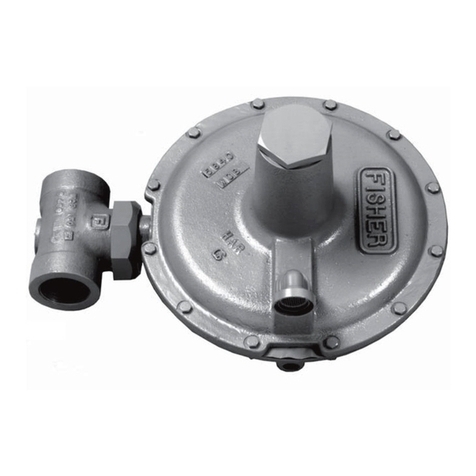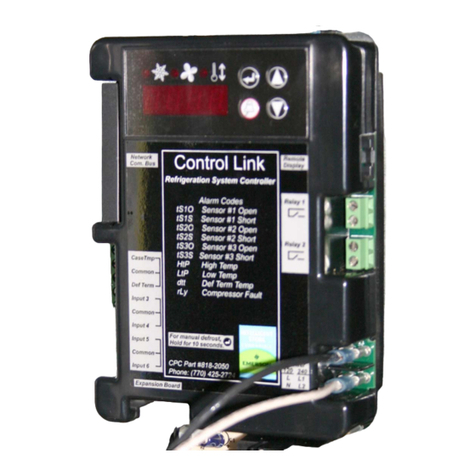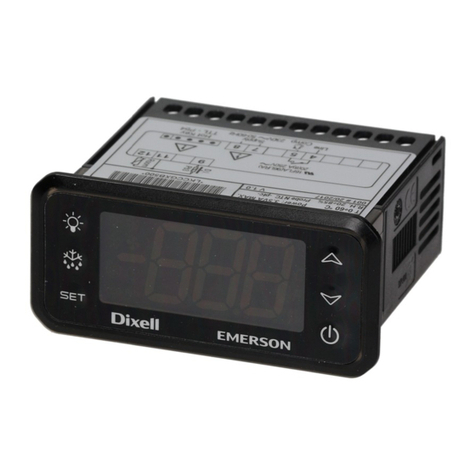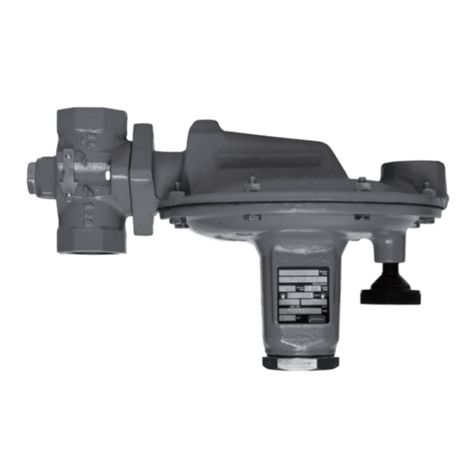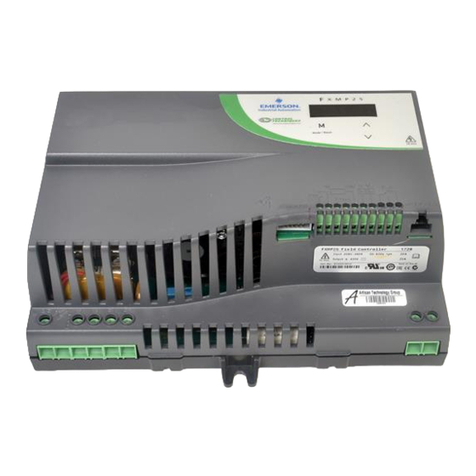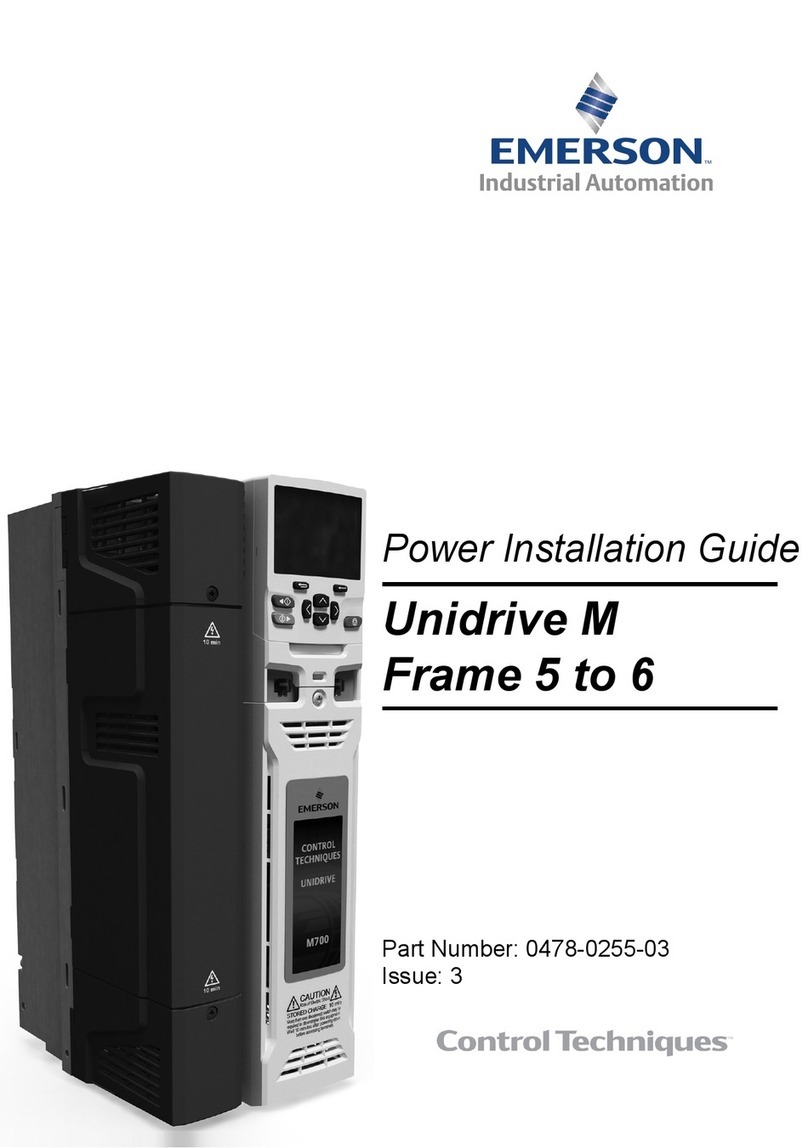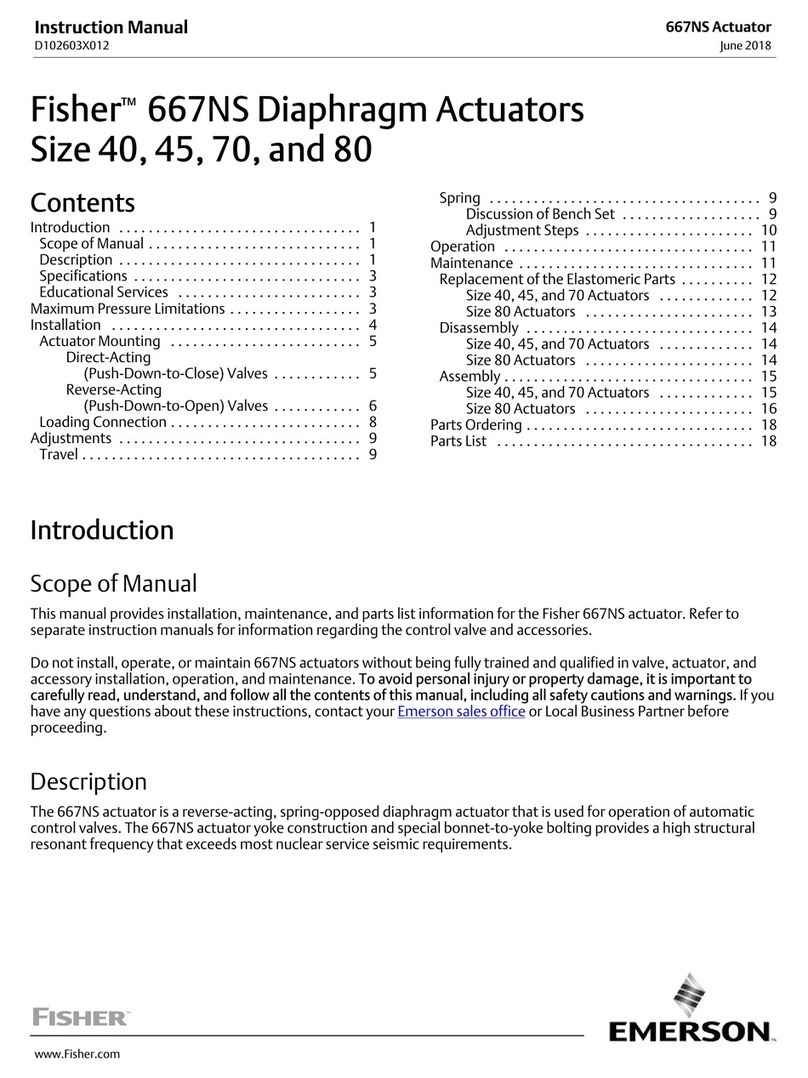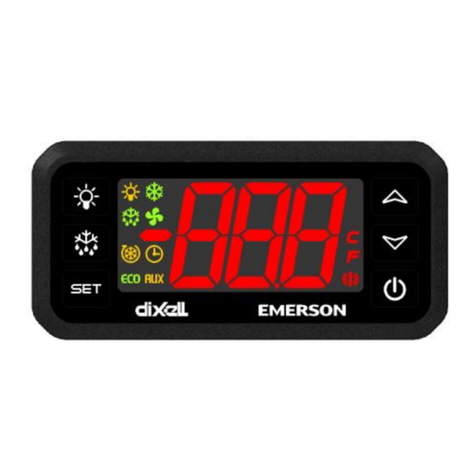
FL Series
4
the intermediate pressure must be rated
for full inlet pressure.
Working monitor installations require aType FL main
valvewithaType PRX/120 or PRX/120-APworkingpilot
andaTypePRX/125orPRX/125-APmonitoring pilot for
theupstream regulator and aTypeFLwiththe appropri-
ateTypePRX/120orPRX/120-APpilot for the down-
streamregulator. The Type MFLincorporates the
monitor and regulator into one compact unit.
Installation and Startup
Personal injury or equipment damage,
dueto burstingof pressure-containing
parts may result if this regulator is over-
pressured or is installed where service
conditions could exceed the limits given
in the Specification section and on the
appropriate nameplate, or where condi-
tions exceed any rating of the adjacent
piping or piping connections.
To avoid such injury or damage, provide
pressure-relievingor pressure-limiting
devices to prevent service conditions from
exceeding those limits. Also, check that
the installation is in compliance with all
applicable codes and regulations.
Additionally, physical damage to the
regulator could break the pilot off the
main valve, causing personal injury and
property damage due to bursting of
pressure-containing parts. To avoid such
injury and damage, install the regulator in
a safe location.
Single Pilot Regulator
Installation
AType FL regulator bleeds no gas to atmosphere
duringnormal operation, thus making the regulator
suitable for installation in pits and other enclosed
locations without elaborate venting systems. This
regulator also can be installed in pits subject to
floodingby venting the pilot springcaseabove the
expected flood level so that the pilot setting can be
referencedtoatmosphericpressure.
1. Usequalifiedpersonnelwhen installing, maintain-
ing, or operating this regulator. Inspect the regulator
andthe pipeline to be certain both are free of foreign
materials.
2. Install the regulator so that the flow arrow cast on
themain valve matches the flow direction of process
fluidthroughtheregulator.
3. Apply pipe compound to the male pipeline threads
beforeinstallinga regulator with screwed end connec-
tions. Use gaskets between pipeline and regulator
flangeswheninstalling a regulator with flanged end
connections.
A regulator may vent some gas to the
atmosphere. In hazardous or flammable
gas service, vented gas may accumu-
late, causing personal injury, death, or
property damage due to bursting of
pressure-retaining parts. Vent a regula-
tor in hazardous gas service to a re-
mote, safe location away from air
intakes or any hazardous location. The
vent line or stack opening must be
protected against condensation or
clogging.
4. AType PRX pilot has a 1/4-inch NPT vent connec-
tion in the spring case. To remotely vent gas from the
springcase, remove the screened vent,and connect
1/4-inch piping or tubing to the spring case connection.
Thepiping or tubing shouldvent to a safe location,have
asfew elbows as possible, and have a screened vent
on its exhaust. Install the regulator and any remote
vent piping or tubing so that the vent is protected from
condensation, freezing, or any substance that could
clog it.
5. Connect a pilot supply line from the upstream
piping to the 1/4-inch NPT pilot inlet.
6. Connect a downstream control line to a straight
run of pipe 6 to 10 pipe diameters from the regulator
outlet as shown in figure 3. If such a distance is not
practical, connect the control line away from elbows,
swages,nipples, or any area where abnormalflow
velocitiesoccur.
7. Install a hand valve in the control line.
8. Install the other end of the downstream control
line to the 1/2-inch NPT connection in either side of the
case body.
